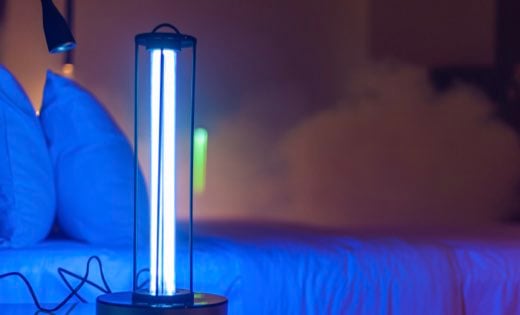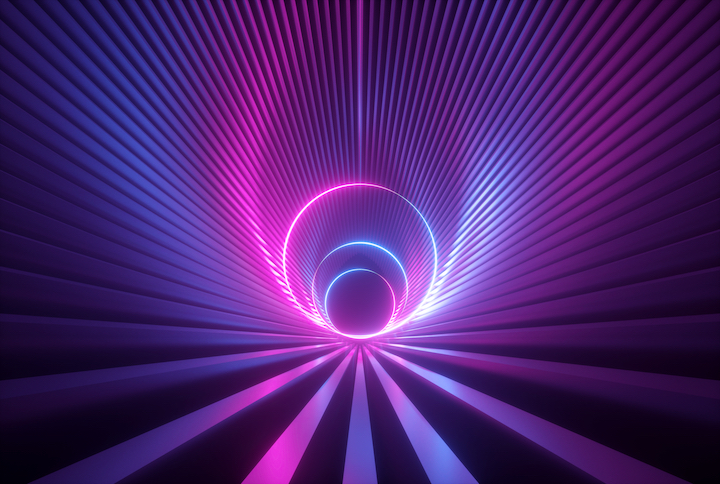Today, the sanitisation of air, water and surfaces is a very topical issue which, especially in recent years, has gained in importance following the Covid-19 pandemic. Sanitisation systems have become part of many sectors and more and more companies are offering sanitisation-related products that are not only high-performance but also aesthetically appealing.
How is air and room sanitisation carried out? Why opt for ultraviolet sanitisation? And finally, why can LED UV-C technology optimise sanitisation?
In this article, we will explore what ultraviolet sanitisation for surfaces and rooms consists of.
More specifically we will be talking about::
Do you want to stay up-to-date with the latest news in the industry? Click below and subscribe to our newsletter!

UV-C sanitisation and Covid-19
The SARS-CoV-2 pandemic has influenced an increase in the marketing of ultraviolet germicidal devices, which are increasingly used to sanitise air, objects and surfaces in the home and in public spaces. UV products affect the mutation of the DNA and RNA of bacteria and viruses, thus destroying their reproductive capacity.
It has been proven that a UV light device with a radiation capacity of 280 - 100 nanometres can inactivate up to 99.9% of pathogens.
Since Covid-19 can live on certain surfaces for long periods and can travel through the air, germicidal UV-C lamps are an effective tool in sanitisation. Thanks to their effectiveness, UV lamps for sanitisation have been widely used in hospitals, medical laboratories, offices, schools and hotels. Today, their use has been extended to many sectors with a variety of solutions. Technicians and design engineers are turning their eyes to UVC LED modules to overcome the challenges of traditional UV lamps. Let's see why.

Room sanitisation with UV-C
Sanitisation encompasses both disinfection and sanitisation and consists of the elimination of bacteria, viruses, fungi and moulds by reducing their microbial load and decreasing chemical/biological pollutants. This activity does not involve the elimination of all microorganisms but is highly effective in the reduction of fine particles and the removal of odours and allergens. Therefore, sanitisation concerns both the cleaning, sanitisation and disinfection of surfaces and a more extensive improvement of the air and environmental comfort. More specifically, according to the definition given by the Ministry of Health, the sanitisation of an environment consists of a "combination of processes and operations for cleaning and disinfection and includes maintaining good air quality".
Ultraviolet light has a sanitising power that lies in UV rays, UV rays dosed in time and power are capable of altering the DNA or RNA of microorganisms. On this basis, UV-C-type ultraviolet light, operating in the wavelength spectrum between 270 and 280 nanometres, has a remarkable germicidal and sanitising effect. This technology has been exploited in the past through the use of conventional mercury lamps. Today, the potential of UV-C light is extended by LED technology, which, when used in the shorter wavelengths, acts by damaging viruses and bacteria, rendering them unable to perform vital cellular functions.
Air sanitisation with UV-C
Room sanitisation has become an essential element for the comfort and well-being of people, ensuring a safe environment. In addition to removing germs and bacteria from surfaces, room sanitisation also involves sanitising the air. This method is based on devices that have a UV-C light inside them. The light creates UV-C barriers and the air, as it passes through the device, is sanitised, thus losing its potentially infectious charge. The barriers created by ultraviolet light exploit the chemistry of the rays to eliminate pathogens. Today, UV-C air sanitisation devices are available in various forms and technologies.
Here at SLIM Srl, we offer our knowledge in the field of UV-C LED light signals for the realisation of customised and modular solutions for air and surface sanitisation.
Are you interested in learning more about the development of a UV-C LED solution? Click on the button below, our technical staff is always available to evaluate any specific requirements together.

